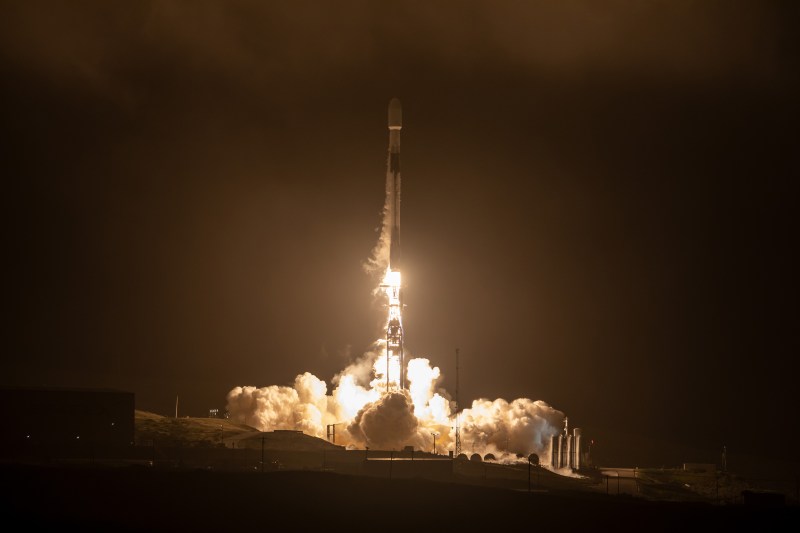After many days of oscillating between excitement, nerves and relief, a team of mostly undergraduate Stanford students watched as months of hard work and late nights were thrusted violently into the sky and deployed into low earth orbit. Weather and technical issues precluded the launch three times, but finally feelings of awe and relief arose as they watched the rocket disappear from sight into the night’s sky.
The above scene describes last Friday’s launch of SpaceX Transporter 7, a rideshare space mission in which 51 payloads were dropped into orbit. One passenger was Sapling Giganteum, a satellite more commonly referred to as Sapling 2, which was designed and built entirely by Stanford students using the labs and machine shops on Stanford campus. The team will be performing their first tests over the next several weeks.
These students are a part of a student-run organization called the Stanford Space Initiative (SSI), a club designed to prepare students for a career in the space industry by giving them hands-on technical experience. Many members describe the organization as “building spaceships with my friends.”
Within the last decade, the commercialization of space has put space within reach for private companies and universities. “Only at this very critical moment where launching spacecraft is cheaper and more accessible than ever before are we able to do something like this as undergrads,” said co-lead of the SSI satellites team Isobel Porteous ’25.
The purpose of this specific mission is to demonstrate that a functional satellite can be built by the collegiate community and other people, according to Jacob Mukobi ‘24, former co-lead for the Sapling 2 project. Accessibility of space is a major goal of SSI and they provide open source software and electrical and mechanical design plans for their satellite. Mukobi said that the accessibility will enable other universities to build off of their basic structure and endeavor on more complex scientific missions with less difficulties.
“If there are people who could have a passion for space, or do have a passion for space, there is a possibility to build your own spacecraft and launch it while you’re here on this campus.” said Flynn Dreilinger ’24, former software lead of the project and former co-president of SSI.
Sapling 2 is a standard cube-shaped, miniature satellite called a CubeSat. A general CubeSat consists of a frame, electronic circuit boards, gps, antennas, solar cells and whatever payload the satellite carries.
Additional innovations aboard Sapling 2 include a new solar panel circuit to ensure the CubeSat is power positive, a 2D mechanical design structure for a more sustainable and cheaper build and small and inexpensive magnetometer design for attitude control. The total cost for constructing Sapling 2 was approximately $3,000-$4,000, according to Dreilinger.
“If I were to see myself today, from when I was in high school or something, I would probably not believe the things that I was doing. I’d be very impressed,” Mukobi said, in describing the skills he has cultivated as a part of the SSI program.
The students had to manage relations and plan flights with companies like SpaceX and ExoLaunch in order to get the satellite launched and towed into orbit. SpaceX provides rideshare missions to take the satellite into space while ExoLaunch provides an orbital transfer unit (OTU) — essentially a space taxi — which ensures the satellite is deployed at the right location.
During the January launch of Sapling 1, the satellite’s predecessor, an OTU designed by a different company failed to open and release Sapling 1 into orbit. This leaves Sapling 1 stuck in space undeployed for 12 years until it will eventually fall out of orbit and burn up in the atmosphere. With ExoLaunch as a new OTU partner, Sapling 2 was successfully transmitted into orbit early Saturday morning.
With the satellite in orbit, there was still the question of whether or not they would be able to receive communications from the satellite after a successful deployment. This requires a ground station network that receives signals from the satellite as it passes by.
At approximately 1:20 a.m. Saturday morning, SSI students confirmed the first packets of communications from Sapling 2 were received at their ground station in the Durand building.
Next steps for the SSI satellites team is to test the many functionalities of Sapling 2. One of these performance checks will be ensuring the SSI team can control the satellite by sending commands back and forth and obtaining images from the camera onboard.
Referring to advancements like remote sensing and supplying internet access to remote areas, Dreilinger said that he finds the project important because of the relevance satellites have in everyday life. “I would say a lot of people undercount the impact that space has on both daily life, but also global events that are happening.“
A previous version of this article referred to Jacob Mukobi as David Mukobi. The Daily regrets this error.
